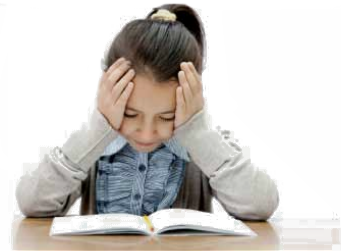Mijn kind heeft moeite met coördinatie: Coördinatie problemen kan voor het kind betekenen dat het niet weet waar zijn/haar lichaam heeft in relatie tot de ruimte. lichaam hebben. Hieronder is een artikel in het Engels over beweging en taal.
Mijn kind heeft moeite met coördinatie geschreven door Sally Goddard Blythe.
Movement and Language
Coordination problems reflect a child’s experience of his or her body in space.
Movement is a child’s first language. Through movement, he explores the world, gains a sense of his own position in space, develops an awareness of his own body map and learns to co-ordinate eyes and body together. His body is also his first vehicle of expression; posture and gesture tell a story of their own, long before fluent speech develops. Body language stays with us for the remainder of our lives. The most advanced level of movement is the ability to stay totally still. To remain still requires whole muscle groups to operate together in perfect synchrony with the balance mechanism. The child in reception class or year 1 who is unable to sit still may be demonstrating that he does not yet have sufficient control over his body to sublimate movement, and focus attention on other tasks.
Movement and language are linked in the early stages of language development. Ask a two-and-a-half-year-old to say “hand” and he will usually wave his hand as he says it. Only as a child starts to develop automatic control of movement, can language emerge as an independent skill. Why are these things so important for learning at school?
It used to be thought that primitive reflexes could not persist in their crude form amongst normal children. A growing body of research (Rider, 1973, Bender, 1976, Wilkinson, 1994), now suggests that vestiges of early reflex patterns can and do persist amongst some normal schoolchildren, and continue to hamper these children in the development of basic skills. An inadequate vocabulary of voluntary movement patterns will limit a child’s expressive abilities. Children who are motor-impaired find it difficult to integrate their personalities into the environment because they do not have a complete repertoire of appropriate reactions. Lack of automisation in motor skills will impede cognitive processing, so that a child may know what he wants to say, but be unable to combine the motor actions of writing with fluent expression of ideas.
Movement helps to develop spatial awareness, directionality and control of balance. The balance mechanism is linked to the muscles that control eye movements via a circuit called the vestibular-oculo-reflex arc. Children with poor balance frequently also show impaired eye movements which in turn can affect reading ability and simple tasks such as aligning columns for calculation in maths.
Less and less is movement a part of our children’s daily lives. From birth they often go into moulded baby seats for their waking hours. Whilst these are invaluable for the modern mother, they should never replace the floor as the first exercise ground. Crawling represents a crucial stage in the integration of motor patterns, for in the process of crawling the infant learns to synchronise this balance, motor, kinetic and visual systems for the first time. Then hand-eye co-ordination involved in crawling is carried out at exactly the same visual distance that a child will use to read and write.
The two-to-three-year-old needs plenty of time to run, to hop, skip and jump; to roll and tumble. These activities help to prime the motor system in preparation for fine muscle skills. Hours spent in front of the television are hours of passive learning – they do not integrate new material into existing systems. The child under the age of 7 learns best when he relates physically and emotionally to material. The old-fashioned system of “sounding out” as a class was an example of an active method of learning. It helped to build auditory memory,. Before we learn to sub vocalise, something many of us do when trying to commit something to memory, we first need to vocalise. The school-age child needs time to move as well as time to sit still – not all difficulties with reading, writing and attention reside in the head; some are linked to the body.
Bron: Natural Parent magazine January/February 1999 by Sally Goddard Blythe.
Mijn kind heeft moeite met coördinatie: coördinatie bepaalt of proprioceptie en evenwicht in balans zijn…
Vul de vragenlijst reflexintegratie in voor jouw kind en neem dan contact op met een INPP therapeut bij jou in de buurt.
Werk je in het onderwijs en ben je benieuwd wat het INPP programma voor jouw leerlingen kan betekenen?
Bezoek dan onze onderwijs website op: https://eerstbewegendanleren.nl/
Ben je therapeut of behandelaar voor kinderen/volwassenen en ben je benieuwd hoe jij het INPP programma kan toepassen?
Kijk dan op onze therapeuten website: https://www.inppreflexintegratie.nl/

